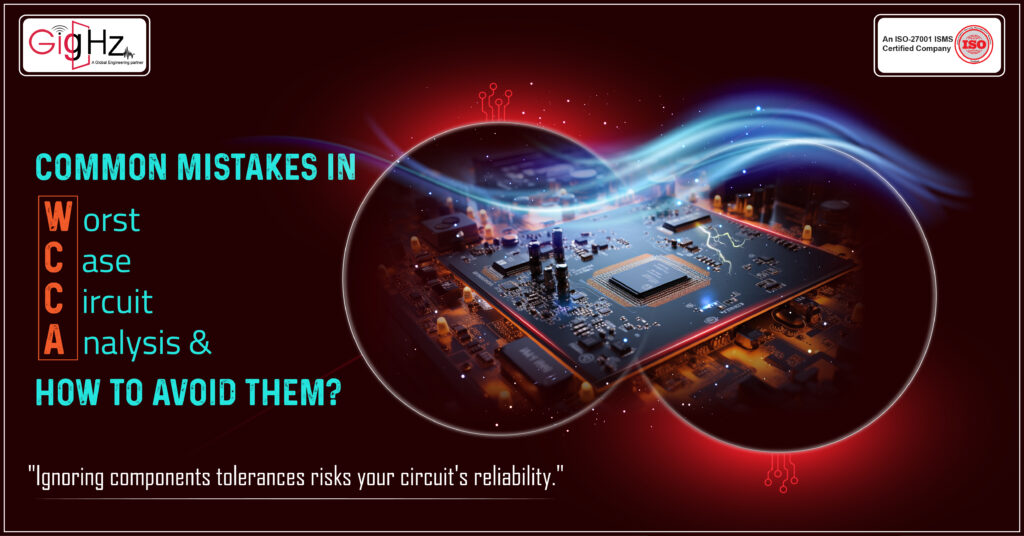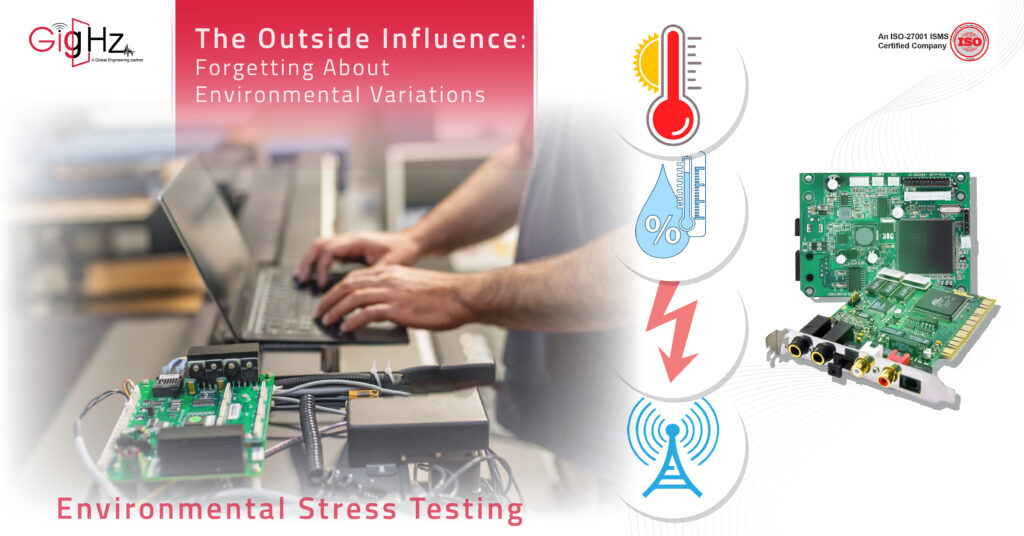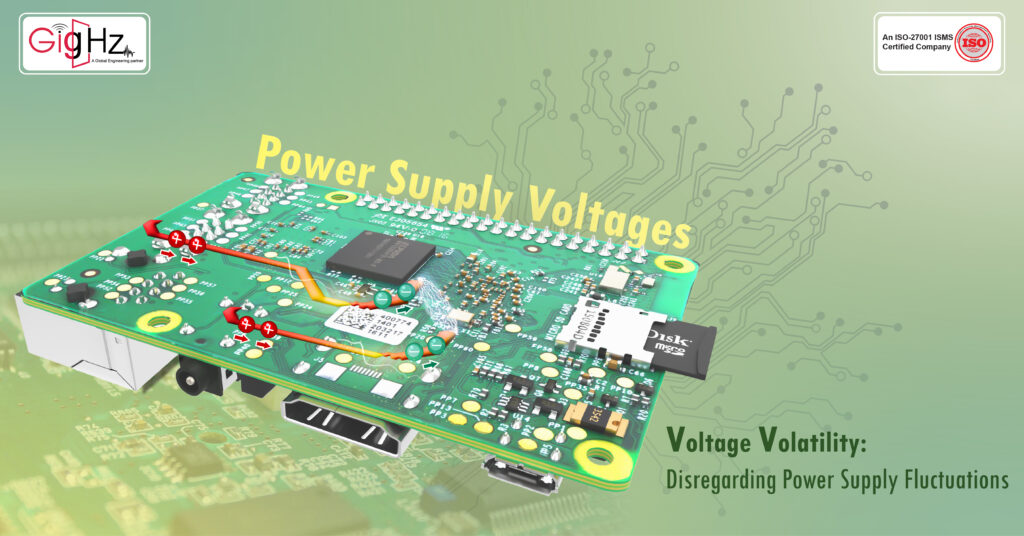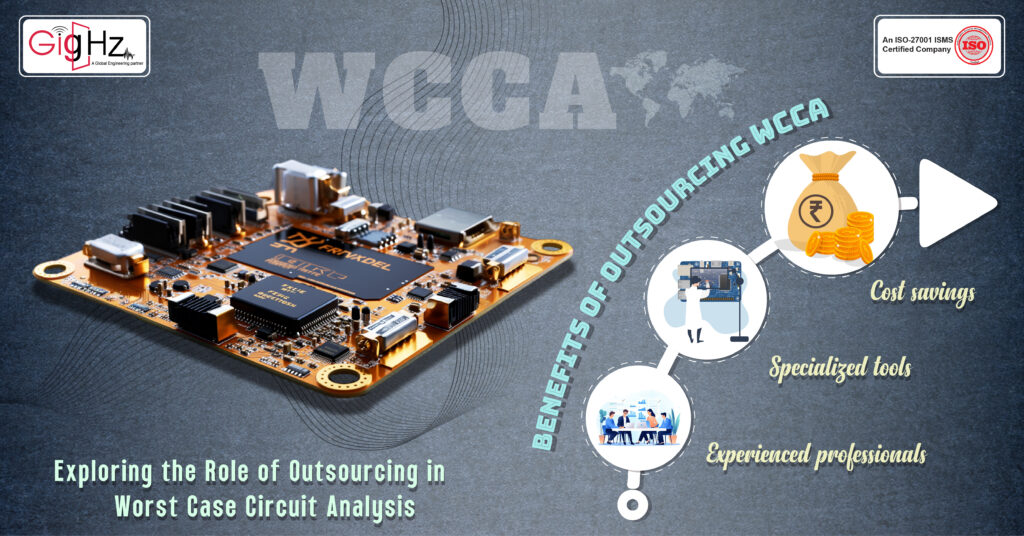Common Mistakes in WCCA & How to Avoid Them?
In the intricate world of electronics design and analysis, Worst Case Circuit Analysis (WCCA) stands as a critical process to ensure that electronic systems operate reliably under extreme conditions. WCCA leaves no room for error, as it considers the worst-case scenarios for various components and environmental factors. However, even seasoned engineers can fall into common pitfalls during WCCA, potentially harming the integrity of their designs.
Building high-reliability electronic systems for space applications requires strict adherence to top-tier design methodologies, the use of the most dependable components and materials, established manufacturing procedures, and meticulous testing under environmental scenarios that simulate expected conditions in orbit.

Imagine a world where drawing a picture on a computer screen could turn into real things. That’s what Mechanical Computer-Aided Design, or MCAD, does. It’s like magic for engineers and designers. In this digital adventure, we’ll see how MCAD helps create amazing machines and gadgets. You don’t need to be a genius; you just need a computer and some ideas.
Category :
Published Date :
November 3, 2023
Category :
Published Date :
November 3, 2023
Category :
Published Date :
November 3, 2023
In this blog, we’ll explore these common mistakes and, more importantly, provide insights on how to steer clear of them.
Let’s delve into the world of WCCA and discover how to ensure that electronic systems remain rock-solid when facing their harshest challenges.
- Neglecting Component Tolerances
- Ignoring Environmental Factors
- Underestimating Power Supply Variation
- Overly Simplifying Interactions
- Inadequate Documentation and Traceability
- Outsourcing WCCA: Pros and Pitfalls
What is Worst Case Analysis?
Conducting a worst-case analysis involves evaluating a circuit’s operational efficiency, considering various tolerances like Beginning of Life (BOL), environmental factors (Temperature), aging End-of-Life (EOL), and radiation tolerances specifically applicable in Space applications.
The need for hardware is of the utmost significance for effective WCCA. A critical issue is the lack of part data to fill in datasheet gaps, model correlation data to define model performance, and circuit correlation data to anchor simulations, assumptions, and conclusions. Without data, you will be making decisions and making judgments without a solid foundation.
The WCCA evaluates the mathematical impact of circuit performance under varying conditions, providing statistical and non-statistical strategies for managing factors that influence circuit functionality. Such outcomes are critical in improving product excellence.
This is accomplished by AEi Systems using meticulous mathematical models, simulation techniques, and hardware alignment. These aligned simulation models help in the determination of component stress margins and product specifications for EOL/BOL operations. A single stressed component can result in significant financial loss for your company, so making a thorough Worst Case Analysis Circuit is essential in avoiding such risks.
Why is Worst Case Analysis Important?
Reliability Assurance: It ensures circuit functionality in extreme conditions, ensuring reliability even in the worst-case scenario.
Safety Compliance: Identifies potential failures, allowing for the implementation of safety measures in critical applications.
Risk Mitigation: Helps risk assessment by highlighting potential flaws in the circuit design.
Quality Control: Verifies the design’s robustness, ensuring consistent performance despite component variations.
Regulatory Compliance: Required for meeting industry standards and specifications in a variety of industries.
Cost Efficiency: Prevents over-engineering by focusing on critical areas, allowing costs to be designed.
Performance Validation: Tests the circuit’s performance under a variety of real-world conditions to ensure it meets operational requirements.
Learn more about Analysis & Simulations
Who Should Perform the WCCA?
To avoid bias, the analysis should ideally be performed by an independent analyst. Because of mistakes or oversights made during the design process, the circuit designer should not perform the WCCA. Internal WCCA is almost always inadequately rigorous to be acceptable to most prime contractors, such as LMCO, Boeing, Aerospace Corporation, or NASA and does not meet their strict standards. Designers simply believe their design will work based on “experience” or limited breadboard data, rather than numbers.
Recommended Areas
The WCCA is recommended in the following areas:
- Aerospace Weapons and Satellites
- Nuclear Reactors
- Medical Electronics
- Transportation Systems
- Oceanic’s
- Ammunition Production Facilities
- Naval Systems and Ship Board Equipment
- Test equipment and facilities
Worst-case analysis method types
- Extreme Value Analysis (EVA) determines the maximum component and functional limits of a circuit.
- The Root Sum Square (RSS) method takes a statistical approach, assuming that components converge mostly toward the middle of the tolerance range rather than the extreme ends.
- Monte Carlo analysis involves selecting parameters at random from a distribution and simulating the circuit for 1000 to 100000 iterations.
Neglecting Component Tolerances

The Devil in the Details: Overlooking Component Variations
One of the most common mistakes in WCCA is neglecting the tolerances of electronic components. Components, such as resistors, capacitors, and integrated circuits, come with specified tolerance ranges. Failing to account for these variations can lead to overly optimistic worst-case scenarios, potentially causing the circuit to fail under real-world conditions.
Monte Carlo Analysis
Monte Carlo Analysis provides a more realistic worst-case scenario by accounting for component variations, ensuring that your design remains robust under all conditions. This statistical method involves running multiple simulations with randomly varied component values within their specified tolerances.
Component Aging and Degradation
Component aging and degradation over time can significantly impact circuit performance. Neglecting the factors like moisture, corrosion and oxidation in the effects of component aging can lead to inaccurate worst-case predictions.Understanding component aging and implementing proper mitigation strategies is essential for long-term reliability.
Ignoring Environmental Factors

The Outside Influence: Forgetting About Environmental Variations
Electronic systems often operate in diverse environments with fluctuations in temperature, humidity, and voltage supply.Overlooking the impact of these environmental factors in WCCA can lead to unreliable designs, as the worst-case conditions are not accurately represented.
Environmental Stress Testing
To address this oversight, conduct environmental stress testing during WCCA. This involves subjecting the circuit to extreme conditions representative of its intended environment. By testing under realistic scenarios, you can identify vulnerabilities and design mitigations that ensure the circuit’s reliability in the field.
Thermal Analysis
Temperature variations can significantly affect component behaviour and reliability. Thermal analysis is crucial in worst-case analysis, as it helps identify potential thermal hotspots and ensures that components remain within safe operating temperatures.
Underestimating Power Supply Variation

Voltage Volatility: Disregarding Power Supply Fluctuations
Power supply voltages are seldom constant; they can fluctuate due to factors like load variations or supply noise. Underestimating these voltage variations during WCCA can result in an inaccurate worst-case analysis, potentially leading to unexpected failures.
Voltage Margin Analysis
To avoid this pitfall, perform Voltage Margin Analysis. This approach involves evaluating the circuit’s performance over a range of power supply voltages. By determining how the circuit behaves under different voltage conditions, you can identify potential failure points and design for robustness.
Transient Voltage Effects
Transient voltage events, such as voltage spikes or surges, can occur in the power supply. These events can lead to temporary voltage deviations that may impact the circuit’s performance. Accounting for transient voltage effects is essential in comprehensive WCCA.
Overly Simplifying Interactions
Component Interactions: Oversimplifying Circuit Behaviour
Electronic circuits are dynamic systems with components that interact in complex ways. Simplifying these interactions too much during WCCA can lead to overly optimistic or inaccurate worst-case scenarios. Failing to account for component interactions can result in unanticipated issues during actual operation.
Advanced Simulation Techniques
To overcome this challenge, employ advanced simulation techniques such as Transient Analysis and SPICE modelling. These methods provide a more comprehensive view of circuit behaviour, including dynamic interactions between components. By using detailed simulations, you can uncover potential issues that may not be apparent in simplified analyses.
Signal Crosstalk and Interference
In complex circuits, signal crosstalk and interference between components can degrade performance. Analyzing and mitigating signal integrity issues, including crosstalk and interference, is crucial in WCCA, especially for high-speed and mixed-signal designs.
Inadequate Documentation and Traceability
Lost in Translation: Neglecting Proper Documentation
Finally, a common mistake in WCCA is inadequate documentation and traceability. Without clear records of your worst-case analysis, it can be challenging to verify or reproduce results, potentially leading to misunderstandings and design errors.
Rigorous Documentation Practices
To ensure traceability and transparency, establish rigorous documentation practices. Maintain detailed records of your worst-case assumptions, simulations, and results.
This documentation serves as a reference for design reviews, compliance audits, and future iterations of the circuit, ensuring that the analysis process remains reliable and reproducible.
Collaboration and Knowledge Sharing
Effective communication and collaboration among team members are essential in WCCA.
Encouraging knowledge sharing and cross-functional discussions helps in identifying potential errors, validating assumptions, and ensuring that the entire team understands and contributes to the worst-case analysis process.
Outsourcing WCCA: Pros and Pitfalls
Exploring the Role of Outsourcing in Worst Case Circuit Analysis
In the modern landscape of electronics design and analysis, outsourcing has become a viable option for conducting Worst Case Circuit Analysis (WCCA).
The Benefits of Outsourcing WCCA
Outsourcing WCCA can offer benefits such as cost savings, access to specialized expertise, and accelerated project timelines. However, it also comes with its own set of challenges and potential pitfalls that need careful consideration.
It can provide access to experienced professionals with expertise in specialized tools and methodologies.
Also, this can lead to more accurate worst-case analyses, quicker turnaround times, and cost savings compared to in-house efforts

Conclusion
In the world of electronics design, mastering Worst Case Circuit Analysis (WCCA) is essential. We’ve explored common mistakes and how to avoid them, emphasizing precision and attention to detail.
By acknowledging component tolerances, considering environmental factors, evaluating power supply variations, employing advanced simulation techniques, maintaining documentation, and thoughtfully considering outsourcing, you can navigate WCCA with confidence.
For more details, feel free to reach us to reach us
For more details, feel free to reach us
For more details, feel free to reach us
